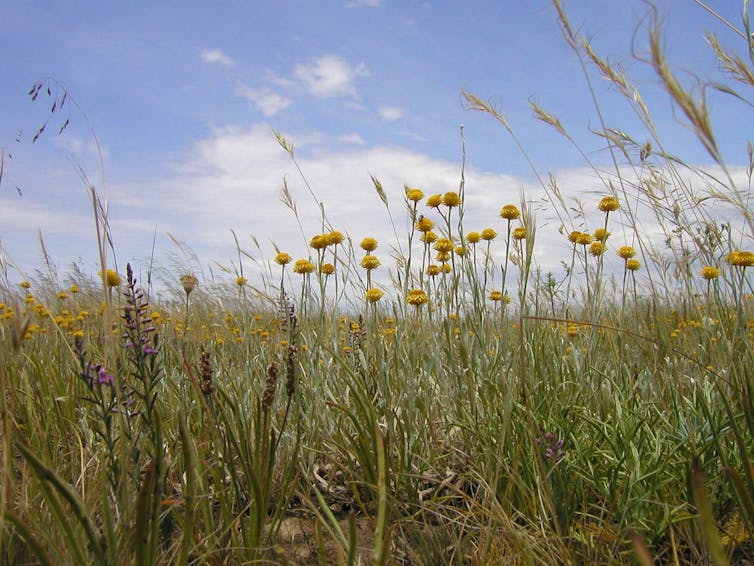In a recent interview, the Opposition environment spokesperson Greg Hunt promised to reverse biodiversity decline in five years if the Coalition wins the forthcoming election.
Is this goal achievable? Not the way we’re going. Our investment in enhancing biodiversity is not keeping pace with the factors driving biodiversity declines.
We continue to lose biodiversity by clearing vegetation for mining, urban development and farm management. Queensland’s rate of clearing alone has recently averaged about 100,000 hectares each year, and looks set to increase. Even our national parks have come under attack.
Is it possible to continue to clear land, but also stop biodiversity decline? In theory, perhaps. This is the apparent promise of biodiversity offsetting, an increasingly popular policy approach. But are our current offset policies really designed to halt declines? We argue the answer is no.
No net loss compared to what?
In Australia, the federal government and all state governments have biodiversity offset policies either in place, or in development. Offsetting is done by trading a biodiversity loss in one location with an equivalent gain in another. Biodiversity offset policies usually aim to achieve “no net loss” of biodiversity.
To what extent can biodiversity offsets contribute to halting biodiversity decline? As usual, the devil is in the detail.
Leaving aside the vexed issue of how we actually measure biodiversity, let’s consider what is actually meant by “no net loss” of biodiversity.
The crucial question here is, “no net loss compared to what?” Most people probably imagine that the answer is no net loss of biodiversity compared to what was there before the impact. But this is not usually the case.
Instead, the real intention of most biodiversity offset policies is to achieve no net loss compared to what would have happened in the absence of the impact and the offset. This is often referred to as the counterfactual.
Calculating the compensation
We can see why this definition of “no net loss” emerges if we consider the two ways that offsetting can be done.
First, gains can be achieved through improving existing habitat, or creating habitat from scratch. For example, we could create new wetland habitat for a threatened frog to compensate for a development that destroys its current wetland habitat.
Although there are many limitations to such restoration offsets, they can neutralise damage to some elements of biodiversity.

Second, we can protect existing habitat as an offset. This is known as an “averted loss” offset, and is the more commonly-used approach.
The assumption here is that protecting against clearing or degradation results in a gain for biodiversity compared to what would have happened without the protection. Calculating this gain requires choosing some sort of “business as usual” rate of decline, based on data on vegetation clearing or degradation of habitat quality.
The gain then occurs because the offset results in better outcomes than would have occurred under the counterfactual “business as usual” scenario. This gain, together with the loss from an impact, provides the “no net loss” outcome.
One of the challenges with this approach is in estimating the counterfactual. It is often (unfortunately) a reasonable assumption that biodiversity will continue to decline. The problem arises when estimating what that rate of decline might be. Since we do very little biodiversity monitoring in Australia, there can be considerable uncertainty around the “business as usual” baseline to which we might compare our offset outcome.
But there are is another important consequence of averted loss offsetting that might not be immediately obvious.
Averted loss offsets only work if biodiversity keeps declining
The crucial point about averted loss offsetting is that it can entrench the baseline rate of decline. That is because the gains from the offset and the losses from the impact are only required to add up to the decline that would otherwise have occurred.
So without additional conservation actions, this approach to offsetting simply ensures current declines continue, at the same rate. This outcome is not a policy failure — it is the way the policy is designed to work.
Allowing this type of averted loss offsetting is therefore an admission that ongoing decline is the norm for our biodiversity. Worryingly, policies structured this way could also provide a perverse incentive to ensure declines continue. This is because without declines, offsets based on “protection” are not possible.
For example, part of the disquiet around increasing protection of vegetation, such as through the Wild Rivers declarations on Cape York, is linked to the potential loss of opportunity to sell offset “credits”. The less of our vegetation we protect, the easier it is to find offsets.
So biodiversity offsets policies that rely heavily on “averted loss” offsetting cannot in themselves reverse declines; they are not designed to. Whether it is fair to expect developers to be responsible not only for negating their impact, but also contributing to improving the lot of biodiversity, is debateable. But we should be aware that offsets are not a panacea. At best, our averted loss offsets will achieve a continuing decline of biodiversity.
At worst, they may provide an incentive for the decline to continue.

